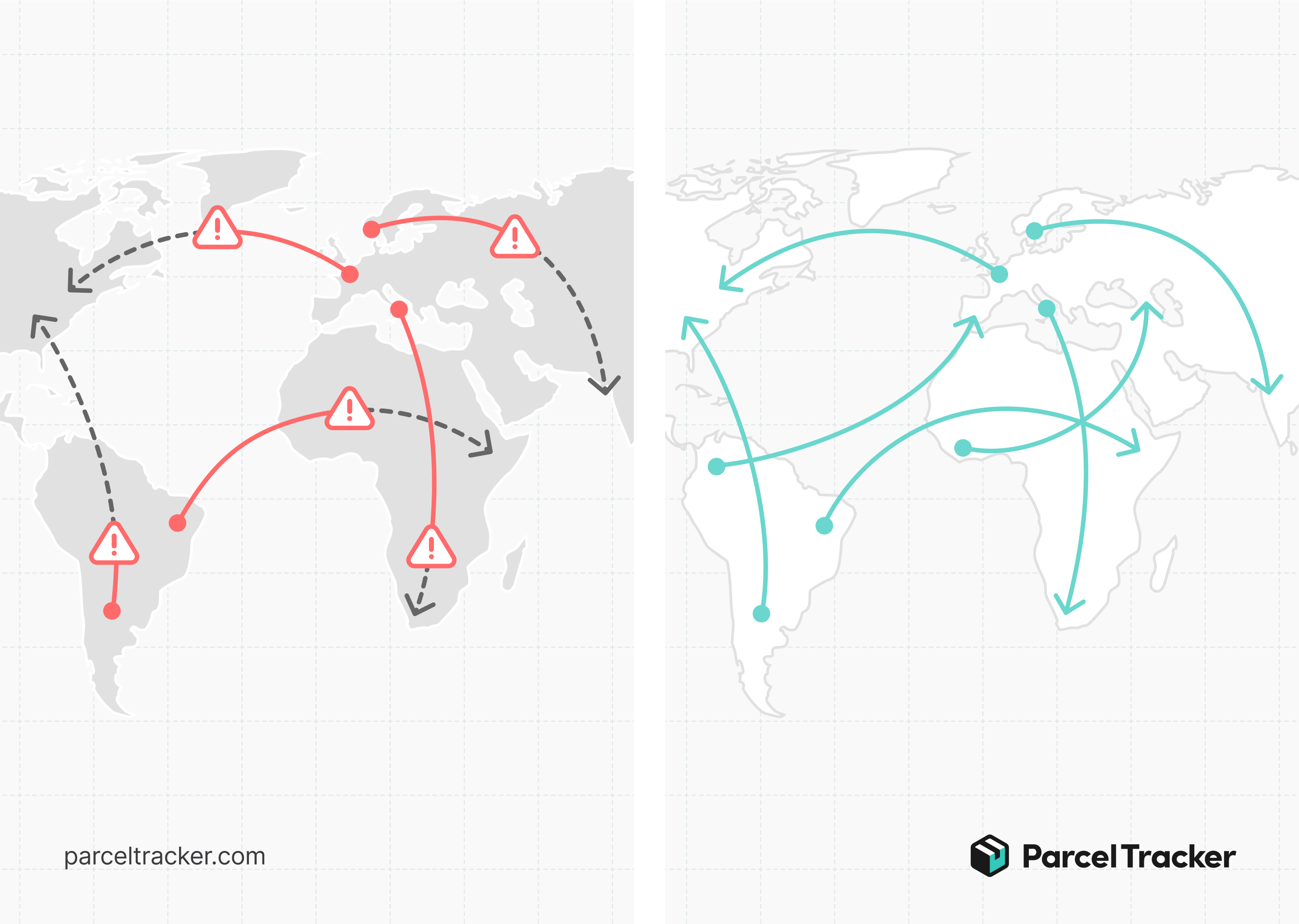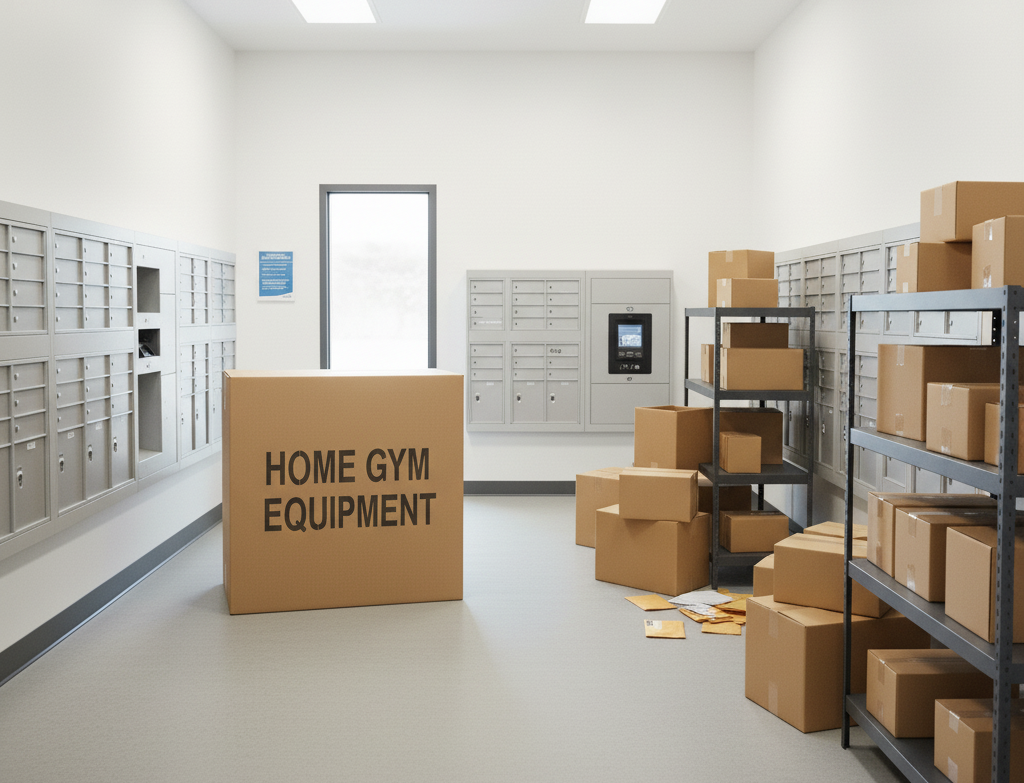Future-Proofing Your Logistics: How Tech-Driven and Managed Solutions Set the Pace

Is your logistics operation prepared for the unpredictability of today, or are you still desperately patching gaps with more automation or additional staff?
A decade ago, global e-commerce sales totaled approximately $1.55 trillion. Fast forward to 2025, and projections show $6.86 trillion. This colossal explosion means a challenging to manage deluge of parcels, increasingly volatile supply chains, and sky-high customer expectations.
These pressures strain many logistics infrastructures until breaking point. And there’s one brutal truth. Technology alone, no matter how brilliant, won't salvage your operations, and neither will simply adding more staff, no matter how experienced they are.
What Logistics Looks Like Now

Logistics today demands more than business as usual. Higher parcel volumes, persistent labor shortages, and sweeping macro shifts hit simultaneously. These pressures shrink your margin for error fast. Delays, lost parcels, and missed updates threaten your business reputation and operational continuity.
The world grapples with unprecedented disruptions. Trade wars erupt, shifting established routes and imposing new costs. Geopolitical conflicts flare, closing critical waterways like the Red Sea, forcing massive detours and spiking insurance premiums.
Supply chains, once seemingly robust, now buckle under the weight of climate-induced events (from severe floods to historic droughts) and the lingering effects of unexpected global health crises.
These changes in logistics demand changes in strategies.
Arthur, from Parcel Tracker, points out that the old ways are toast. When you manage hundreds, even thousands, of incoming deliveries every day, the sheer volume is insane. Missing a manual log, misplacing a package, or delaying a notification actively breaks trust where it matters most: the final yard. This chaos isn't going away. You need tech that cuts through the noise and empowers your team right at the point of delivery, not buries them.
Nick, from Sheer Logistics, agrees, stating the margin for error has evaporated. For middle market shippers, especially, operating in this environment without a strategic partner is a gamble. He often sees brands and retailers working blind without integrated technology. This isn't just about moving goods anymore, but about building an inherently resilient supply chain that anticipates disruptions and maintains flexibility. Otherwise, businesses are just reacting, and that quickly becomes unsustainable.
Let’s take a closer look at how both solution providers support organizations in the logistics world today.
Sheer Logistics in Action
A major client experienced cascading delays. A global tariff change and shifting supplier networks caused chaos. Pure automation flagged the slowdown, but Sheer's team took charge.
They leveraged SheerExchange integration and hands-on intervention. They pivoted sourcing, rerouted shipments, and kept the supply chain running. In this instance, human judgment far outpaced any algorithm.
Parcel Tracker in Action
The University of York is a bustling campus with over 36,000 recipients across 11 sites. They manage 340,000 parcels annually. Before Parcel Tracker, staff had to deal with manual logging, inconsistent processes, and chasing recipients. Post-implementation, Parcel Tracker's app delivered remarkable results: 1300 hours saved annually, problem resolution became 3x faster, and collections were 6x faster.
The system didn't try to replace staff, but it enabled them. When a parcel was scanned, it automatically triggered a notification, allowing the recipient to pick it up immediately. A real person took photos of the package and the digital signature as proof of delivery to ensure that no parcel vanished into a "digital black hole" and to maintain high student satisfaction.
Visibility, Automation & Control
Visibility isn't negotiable anymore. It's more than parcel tracking. It means knowing everything's location, who touched it, and what actions happened, all in real-time. Businesses operating in silos, with disconnected ERPs, TMS, or parcel management systems, are operating in the dark.

Nick often emphasizes that operating with siloed data means missed opportunities and inflated costs. Enterprise-wide visibility is the cornerstone of modern logistics strategy. He notes that their clients leverage integration middleware to unify their ERPs, TMS, and other supply chain systems. This doesn't just track parcels but generates predictive and prescriptive analytics that empower decision-makers with timely, actionable data, transforming how they operate.
Automation must deliver control, not chaos. Smart automation accelerates repetitive tasks like scanning, sending notifications, and sorting. It also flags lost or delayed parcels immediately with exception monitoring. The key is that automation allows teams to focus on meaningful, value-added work. It should never introduce complexity or strip away the visibility needed for confident decision-making.
Arthur agrees that Nick nails it on the big picture. He adds that down on the ground, where the rubber meets the road, visibility is just as critical. It’s about giving the person handling deliveries immediate answers. He explains that they build systems that make data so clear, so simple, that even a new hire can pick up a smartphone (which works as a scanner) and know exactly what’s happening with every package. No more digging, no more guesswork. That's real control, especially when you’re dealing with an overwhelming amount of final-leg items.
Tech + Human Expertise
The biggest logistics myth? That software alone fixes every operational issue. The truth: even the best platform only thrives when smart processes and skilled people guide it.

Automation excels at repetitive tasks and data-driven decisions. This crucial efficiency then frees human experts to excel at:
- Making complex judgment calls during disruptions
- Resolving nuanced issues like mislabeled, damaged, or suspicious parcels
- Building vital trust and rapport with tenants, students, or customers
Nick explains that as a 4PL provider, Sheer Logistics leverages automation for the predictable: routine routing, mass data collection. This empowers their experts to tackle the unpredictable, where the human advantage shines. Despite all the advances in AI and machine learning, veteran logistics professionals bring unparalleled judgment, nuance, and creativity to unique supply chain challenges. Algorithms can flag a problem, but his team identifies innovative solutions, negotiates better terms, and pivots entire strategies. That irreplaceable human expertise is vital for managing complex, global supply chains.
Arthur highlights Nick's great point, emphasizing that down in the trenches, it’s just as vital. Automating a messy process just gives you automated mess, he states. He explains their tech handles the grunt work—the scans, the notifications—so staff can focus on what genuinely counts. When a student's package arrives damaged, or an important delivery takes an unexpected turn, a human needs to step in. That's where trust is built, not broken. He concludes that they design their software to make teams faster and more accurate, sharpening their critical judgment and enhancing their personal touch.
Strategy & Preparedness
Agile supply chains rely on resilience and adaptability. Disruptions aren't rare. They're expected. Logistics leaders must prioritize preparedness at every level, from onboarding to ongoing support.
Nick says that for too long, logistics was just seen as a cost of doing business. That thinking is a relic. Today, a high-functioning supply chain is a strategic imperative. Disruptions aren't 'events' you react to but the new normal you prepare for. He explains that they help their clients build adaptability and resilience into their operations and technology. This means robust scenario planning, understanding potential impacts from regulatory shifts to sudden volume spikes, and preparing clear playbooks for rapid response. It allows businesses to pivot, seize opportunities, and mitigate risks and disruptions, turning chaos into a competitive edge.
Actionable strategies include:
- Standardize Core Processes: Build a solid operational backbone. Then allow flexibility for each site or team to localize and adjust as needed.
- Monitor the Right Metrics: Track time-to-notification, collection lag, exception rates, and handover accuracy closely. Review them regularly.
- Invest in Ongoing Training: Don't treat onboarding as a one-and-done task. Regularly refresh and upskill your teams to keep pace with new tools and processes.
- Scenario Planning: Map out possible disruptions like regulatory changes or sudden parcel volume spikes. Prepare playbooks for rapid response.
The organizations that thrive will view disruptions as strategic planning components, rather than just emergencies that demand reactions.
Arthur asserts you can't just cross your fingers and hope. On the ground, this translates to ruthlessly standardized core processes. If every site handles deliveries differently, he believes you're building a house of cards. He explains their systems help enforce that backbone, so when something unexpected hits (a sudden staff shortage or a massive influx of parcels), your team isn't guessing. They follow clear steps, backed by reliable data.
Partnership & Collaboration

Modern logistics success is rarely a solo effort. Real efficiency and resilience stem from strong partnerships, including those with tech providers, managed services, and even within your internal departments.
Nick explains their core belief at Sheer Logistics is that technology platforms work best when they work together. That's why they built SheerExchange. Many companies struggle with siloed data, but their platform seamlessly integrates disparate systems—your ERP, your transportation management, real-time tracking, even fuel programs. He states this is about delivering actionable, unified data that decision-makers need. He concludes that a successful partnership requires software, clear communication, shared goals, and an understanding of each other's roles.
Sheer Logistics built the SheerExchange platform on the principle that technology platforms work best when combined. Integrating ERP, transportation management, and real-time tracking into a single flow delivers the actionable data that decision-makers need. Similarly, Parcel Tracker's seamless integration with building access, security, and other facilities software breaks silos. It ensures everyone, from the front desk to the final recipient, stays on the same page.
Arthur agrees that Nick is right about breaking silos. In the last mile, he observes, those disconnected systems cause endless headaches. He asks readers to think about how mailrooms often sit separate from building access, security, or even student housing software. He explains that their solution seamlessly integrates with these other vital facilities platforms. This means that if a recipient checks in at the front desk, the system knows if they have a package waiting. It ensures everyone, from the front desk staff to the final recipient, stays on the same page. That's how they eliminate confusion and ensure a smooth, efficient handover.
A successful logistics partnership demands open communication, shared goals, and clearly defined roles. When tech providers and managed service teams align, customers experience greater efficiency, less confusion, and faster resolution.
Thriving in the New Normal of Logistics
As Nick says, disruptions aren't events, but they're the new normal. The only way forward is to make your operation both adaptive and resilient. This means blending tech-driven efficiency with the flexibility and creativity of experienced people.
Arthur adds that it's about giving teams the tools to not just survive but excel amid that constant change. It’s about turning potential chaos into manageable moments, day in and day out, at every point of delivery.
Parcel Tracker and Sheer Logistics aren't just keeping pace. We are ahead. We empower shippers, facility managers, and mailroom teams to move forward with clarity and confidence.
Will you bet everything on tech alone, or will you empower your people with the right tools and partnerships to win? Your answer will decide whether your business thrives or merely survives in this new logistics reality.
About the Authors:
Nick Fryer, VP of Marketing at Sheer Logistics: Nick drives the transformation of managed logistics, passionately connecting advanced technology with human expertise to deliver unparalleled customer success.
Arthur Zargaryan, Co-Founder at Parcel Tracker: Championing the revolution in parcel management. Arthur's vision centers on making mailrooms effortlessly efficient with intuitive, scalable technology that empowers teams.






